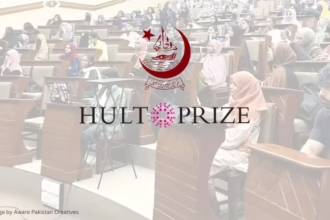Sindh, a province endowed with a wealth of resources and a profound historical and cultural legacy, often finds itself relegated to the shadows. Federal authorities, driven by electoral considerations, tend to shower attention on provinces that promise more votes. The consequence? Despite its riches, Sindh grapples with persistent issues, especially in its underprivileged regions. Despite considerable resource wealth, the province often finds itself inadequately budgeted. This financial disparity, exacerbated by policies that prioritize other regions, particularly affects the backward areas of Sindh.
Today, I aim to spotlight the major challenges confronting these backward areas of Sindh. My perspective is deeply rooted in personal experience, having grown up in one of these marginalized regions and later witnessed the stark differences while living in the thriving city of Lahore.
The first and most important issue that exists in each backward area of Sindh is education and the lack of awareness. Even though the constitution of Pakistan promises to provide education to every citizen, it falls short when it comes to backward areas of Sindh.
Financial disparities, lack of opportunities for farmers, and systemic neglect of women underscore Sindh’s urgent needs.
Many areas in Sindh lack even the most fundamental building block of education: primary schools. In the absence of this essential foundation, the dreams of children and young minds remain stifled, never gaining the momentum they need to ascend to higher educational levels. The scarcity of schools in these regions paints a bleak picture, hindering the intellectual growth and potential of generations to come.
In areas fortunate enough to have schools, a different problem emerges: the lack of a serious attitude from both teachers and administration. In some cases, educators merely go through the motions, treating their responsibilities as mere formalities. The consequence? Students in these regions are denied the quality education they deserve, further widening the gap between them and their more privileged counterparts in other regions.
The disparities are most evident in the dearth of standard schools and colleges. In contrast to the neighboring Punjab regions, Sindh’s backward areas are left yearning for educational institutions that not only impart knowledge but also serve as guiding lights for students’ careers and personal development. Students from these regions often find themselves at a disadvantage when they reach the same university halls as their peers from more developed areas. They must overcome a significant knowledge gap, which can be a daunting challenge.
When we observe the overall educational difference between Sindh and Punjab, we will come to know the day-night difference, even though both are in the same country. Why this difference? The only possible answer is because of our own rulers; they will never intend to educate the people of Sindh, for if they get awareness, they will question them about their rights.
Untapped potential in underprivileged Sindh calls for immediate government attention and investment in key sectors.
The second critical issue in the underdeveloped regions of Sindh that warrants discussion is the severe lack of opportunities for farmers. In nearly every corner of underdeveloped Sindh, you’ll find areas predominantly inhabited by farmers. These individuals rely heavily on the crops they cultivate, but regrettably, they struggle to access the essential information needed to enhance their crop yields and diversify their agricultural output. This predicament arises from the fact that they receive inadequate guidance and support from the government, preventing them from reaching their full potential.
Furthermore, the soaring costs of raw materials required for farming, exacerbated by inflation, compound the challenges faced by these farmers. As a result, their livelihoods are severely affected, making it increasingly difficult for them to provide for their families.
This predicament raises a crucial question: How can these struggling farmers contribute to a happier and more prosperous Pakistan when they themselves are grappling with these multifaceted challenges? It is important to note that agriculture remains a pivotal pillar of Pakistan’s economy, contributing significantly to the country’s GDP.
The third most pressing issue in the underprivileged regions of Sindh is the systemic neglect and suppression of women’s potential. Here, women are often relegated to roles akin to those of mere machines, primarily tasked with domestic chores and childbirth. Astonishingly, even in this modern age, women in these areas are systematically denied access to education, as schools and colleges are often off-limits to them.
We understand that the education of women is a cornerstone of progress and development. When a woman is educated, it signifies that an entire family is educated, setting the stage for positive change in the community. However, in these marginalized regions, women are stripped of their fundamental rights, facing severe discrimination and ostracism when they dare to advocate for themselves. The deeply concerning issue of honor killings continues to persist, with far too many cases emerging each month in these areas of Sindh.
Education gaps, and agricultural struggles highlight the challenges in Sindh’s marginalized areas.
To rectify this glaring injustice, the government must take action. It should establish separate educational institutions for women, ensuring they have access to quality education. Furthermore, awareness campaigns aimed at empowering women should be actively promoted. It is essential to recognize that the constitution of Pakistan guarantees equal treatment for all citizens, regardless of gender. Therefore, it is incumbent upon society and the government to ensure that this promise is upheld and that women in these regions are treated as equals, with dignity and respect.
There are myriad challenges faced by individuals living in the underdeveloped regions of Sindh, and the difficulties I’ve encountered as a student in these areas remain unforgettable. It is imperative for the government to take proactive measures to support these marginalized regions. After all, the inhabitants of these areas are also citizens of the same country and are entitled to the same rights and opportunities as their urban counterparts.
The stark contrast in treatment based on geographic location highlights a glaring issue that demands immediate attention. It is paramount for the government to acknowledge that every citizen, regardless of their place of residence, should have equal access to rights and opportunities. As a student who has personally weathered these challenges, my perspective underscores the urgency of this matter.
The backward areas of Sindh face a multitude of challenges that must not be ignored. These issues touch the lives of countless individuals, including students who yearn for a better future. As citizens of the same country, the people in these regions have equal rights, and it is the duty of the government to treat them with the fairness and respect they deserve.
The neglect of these areas is a pressing concern that calls for immediate attention. To truly realize the potential of these regions, investment in infrastructure, education, healthcare, and economic development is imperative. We must remember that even in the most underprivileged areas, there is untapped potential waiting to be harnessed. Let’s hope for positive changes in the backward areas of Sindh in the future.







